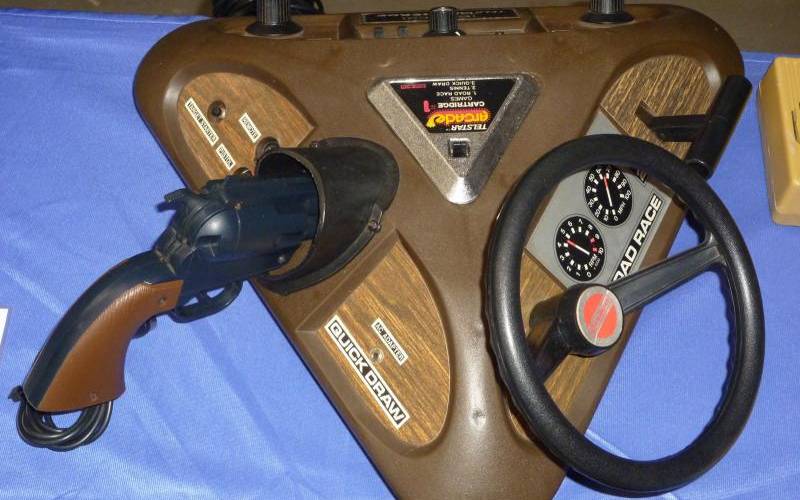
Gaming has a rich history spanning more than 60 years. As the games advance, so do the controllers. Joysticks, pads and wheels have all had a huge influence on the way games are played. Today, we take a trip down memory lane bringing you some of the retro controllers that probably no longer exist.
Sega Master System (1985)
Abbreviated as SMS, it boasted of a streamlined and attractive outline that came in a black exterior with a burgundy label in front of the cartridge slot. The front of the console featured a power button, two controller plugs and a game card slot. The SMS voice samples were incorporated in some games but they tend to be hard to understand.
Nintendo Entertainment System (1983)
Things really started hitting up for gaming in the 1980s. While the US underwent the ‘video game crash’ in 1983, Japan saw the launch of one of the most iconic consoles of all time. The design for the NES controller had four directions and two buttons.
Casio PV1000 (1983)
With only 15 games that used the consoles eight colours, the coolest aspect of the ill-fated console was its joystick controller, with buttons mounted in a jet fighter styling. This console was faced with stiff competition and literally disappeared off the market in a matter of weeks. Casio later remodelled the console into a known as the PV-2000.
Atari 5200 SuperSystem (1982)
In 1982 the world of gaming was thrown into a spin when the first controller design that united a keypad with joystick was introduced. The 5200’s 360-degree non-centering joystick gave players more control than the previous designs. This is the first recognisable console joystick up to date. It is regarded as the grandfather of video games consoles. The console came bundled with a number of controller options, including two joysticks and a pair of dial controllers for paddle or driving games. The system went through several changes but their designs were perfectly compact and nearly indestructible.
RCA Studio II (1977)
While other second-generation consoles were trying new and bold things with their controller designs, the RCA Studio II looked to have taken something of a backward step. The console housed two number pads that gained different control functions for each of its five inbuilt games - some of which used the numbers layout as a direction pad.
Coleco Telstar Arcade (1977)
This was arguably the most extravagant example of a controller. It consisted of three different play functions: a steering wheel for driving simulators, two dials for the standard Pong tennis variations and a quick draw light gun. Unfortunately, there were no games that incorporated all three sets of controls.
Fairchild Channel F (1976)
Stay informed. Subscribe to our newsletter
The first of the “second generation” consoles finally moved controllers on from built-in dials and knobs. Although medicinal in appearance, the black controllers of the Fairchild Channel F were remarkably more sophisticated than the offerings of the previous generation. The thumb-operated “cap” was an eight-direction joystick, which could be pushed into fire or pulled out to... do something other than fire. The cap could also be rotated, offering the same functionality as the former generation of controllers.
Magnavox Odyssey 100 (1972)
This is documented as the first video game console for the home. The Odyssey had an analogue controller with one dial to control horizontal movement and one for vertical. Players could navigate ‘Pong’ paddles for endless hours of joy.
[email protected]
 The Standard Group Plc is a
multi-media organization with investments in media platforms spanning newspaper
print operations, television, radio broadcasting, digital and online services. The
Standard Group is recognized as a leading multi-media house in Kenya with a key
influence in matters of national and international interest.
The Standard Group Plc is a
multi-media organization with investments in media platforms spanning newspaper
print operations, television, radio broadcasting, digital and online services. The
Standard Group is recognized as a leading multi-media house in Kenya with a key
influence in matters of national and international interest.
 The Standard Group Plc is a
multi-media organization with investments in media platforms spanning newspaper
print operations, television, radio broadcasting, digital and online services. The
Standard Group is recognized as a leading multi-media house in Kenya with a key
influence in matters of national and international interest.
The Standard Group Plc is a
multi-media organization with investments in media platforms spanning newspaper
print operations, television, radio broadcasting, digital and online services. The
Standard Group is recognized as a leading multi-media house in Kenya with a key
influence in matters of national and international interest.










